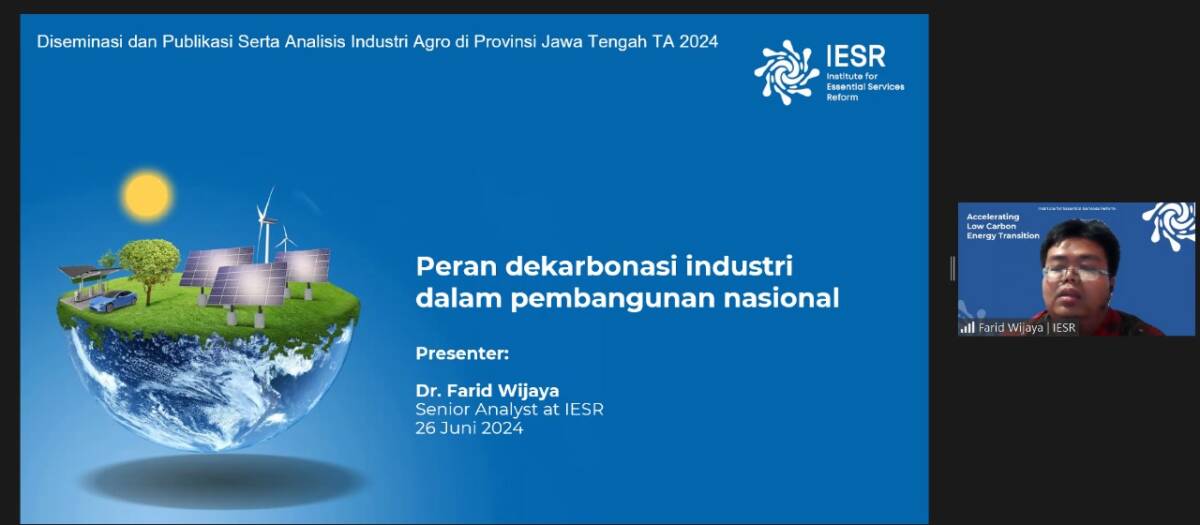Semarang, June 26, 2024 – The industrial sector is one of the largest consumers of fossil energy and a significant contributor to greenhouse gas (GHG) emissions. For this reason, decarbonization of this sector is crucial. This was revealed by Farid Wijaya, Senior Analyst, Institute for Essential Services Reform (IESR) at the Dissemination and Publication and Analysis of Agro-Industry in Central Java Province.
“Along with the current climate crisis, it is a challenge for industries that still depend on fossil energy, especially for those involved in the global supply chain. Currently, many buyers and creditors only want to work with industries that have begun the transition to using renewable energy,” Farid said.
Furthermore, Farid emphasized that the performance of the industrial sector is significant for the national economy and is one of the most critical contributors to GHG emissions. Based on the Indonesia Energy Transition Outlook (IETO) 2024 study issued by IESR, Business as Usual (BaU) projections, Indonesia’s emissions will double by 2050, with around 60-70 percent of emissions coming from energy use in the industrial sector. This is mainly due to high fossil fuel consumption.
“In decarbonizing, efforts to decarbonize the supply chain and value chain are crucial for sustainable industrial environmental management. The supply chain covers the activities of obtaining raw materials, making products, and distributing them to customers, including raw materials, suppliers, processing and production processes, storage and retail, distribution and logistics, and consumers. While the value chain starts with customer values and seeks to embed those values in products and services,” Farid said.
Farid said, citing a study by IESR and Lawrence Berkeley National Laboratory (LBNL), at least in decarbonization efforts, five main pillars can be quantified and become the focus of global efforts: material and resource efficiency, energy efficiency, industrial electrification, low-carbon fuels, raw materials and energy sources, and utilization of CCS/CCUS systems.
“Energy, material and resource efficiency can be low-hanging fruits for industry. According to the LBNL and IESR study, the potential reduction in GHG emissions from resource and energy efficiency to achieve net-zero in 2050-2060 is around 10-25 percent,” Farid said.
Also, industrial electrification, the use of renewable energy, and alternative fuels must go hand in hand with the decarbonization of electricity and energy storage media such as hydrogen. Renewable energy will be a priority, especially geothermal, solar, wind, and water, for power generation and for the generation of environmentally friendly hydrogen. Fossil fuels will still be used to some extent to provide balance and enhance national energy security.

